Climate Classification in the Canadian Prairie Provinces Using Day-to-Day Thermal Variability Metrics
Abstract
:1. Introduction
2. Materials and Methods
2.1. Data
2.2. Analysis
0 if (Ti+1 − Ti) < 0
0 if (Ti+1 − Ti) > 0
3. Results
3.1. Decision Tree Analysis
3.2. Climate Classification
3.3. Paired Airport/Non-Airport Locations
3.4. Marine/Island
3.5. Mountain
4. Discussion
Author Contributions
Funding
Institutional Review Board Statement
Informed Consent Statement
Data Availability Statement
Conflicts of Interest
References
- Gough, W.A. Theoretical considerations of day-to-day temperature variability applied to Toronto and Calgary, Canada data. Theor. Appl. Climatol. 2008, 94, 97–105. [Google Scholar] [CrossRef]
- Karl, T.R.; Knight, R.W.; Plummer, N. Trends in high frequency climate variability in the twentieth century. Nature 1995, 377, 217–220. [Google Scholar] [CrossRef]
- Tam, B.Y.; Gough, W.A.; Mohsin, T. The impact of urbanization on day-to-day temperature variation. Urban Clim. 2015, 12, 1–10. [Google Scholar] [CrossRef]
- Bonacci, O.; Roje-Bonacci, T.; Vrsalovic, A. The day-to-day temperature variability method as a tool for urban heat island analysis: A case of Zagreb-Gric Observatory (1887–2018). Urban Clim. 2022, 45, 101281. [Google Scholar] [CrossRef]
- Gough, W.A. Thermal signatures of peri-urban landscapes. J. Appl. Meteorol. Climatol. 2020, 59, 1443–1452. [Google Scholar] [CrossRef]
- Piskala, V.; Huth, R. Asymmetry of day-to-day temperature changes and its causes. Theor. Appl. Climatol. 2020, 140, 683–690. [Google Scholar] [CrossRef]
- Barlag, A.-B.; Kuttler, W. The significance of country breezes in urban planning. Energy Build. 1990, 15, 291–297. [Google Scholar] [CrossRef]
- Gough, W.A.; Leung, A.C.W. Do airports have their own climate? Meteorology 2022, 1, 171–182. [Google Scholar] [CrossRef]
- Gough, W.A.; Shi, B. Impact of coastalization on day to day temperature variability along China’s east coast. J. Coast. Res. 2020, 36, 451–456. [Google Scholar] [CrossRef]
- Gough, W.A. Thermal metrics for identifying Canadian coastal environments. Coasts 2022, 2, 93–101. [Google Scholar] [CrossRef]
- Gough, W.A.; Li, Z. Detecting a midlatitude island climate signature in the Great Lakes coastal region of Ontario, Canada. Coasts 2024, 4, 454–468. [Google Scholar] [CrossRef]
- Wu, F.-T.; Fu, C.; Qian, Y.; Gao, Y.; Wang, S.-Y. High frequency daily temperature variability in China and its relationship to large scale circulation. Int. J. Climatol. 2017, 37, 570–582. [Google Scholar] [CrossRef]
- Wang, X.; Wu, G.; Qin, Y. Day-to-day temperature variability in China during the last 60 years relative to the Arctic Oscillation. Earth Space Sci. 2022, 9, e2022EA002587. [Google Scholar] [CrossRef]
- Bonacci, O.; Bonacci, D.; Roje-Bonacci, T. Different air temperatures changes in continental and Mediterranean regions: A case study from two Croation stations. Theor. Appl. Clim. 2021, 145, 1333–1346. [Google Scholar] [CrossRef]
- Li, S.-F.; Jiang, D.-B.; Lian, Y.; Yao, Y.-X. Trends in day-to-day variability of surface air temperature in China during 1961–2012. Atmos. Ocean. Sci. Lett. 2017, 10, 122–129. [Google Scholar] [CrossRef]
- Tong, X.; Wang, P.; Wu, S.; Luo, M. Urbanization effects on high frequency temperature variability over South China. Urban Clim. 2022, 42, 101092. [Google Scholar] [CrossRef]
- Zhou, X.; Wang, Q.; Yang, T. Decreases in days with sudden day-to-day temperature change in a warming world. Glob. Planet. Chang. 2020, 192, 103239. [Google Scholar] [CrossRef]
- Przybylak, R.; Singh, G.; Wyszynski, P.; Arazny, A.; Chmist, K. Air temperature changes in SW Greenland in the second half of the 18th century. Clim. Past 2024, 20, 1451–1470. [Google Scholar] [CrossRef]
- Liu, Q.; Fu, C.; Xu, Z. Revisiting two indices measuring high frequency daily variability. Int. J. Climatol. 2024, 44, 2792–2807. [Google Scholar] [CrossRef]
- Xu, Z.; Hu, W.; Tong, S. Temperature variability and childhood pneumonia: An ecological study. Environ. Health Glob. Access Sci. Source 2014, 13, 51. [Google Scholar] [CrossRef]
- Onozuka, D.; Hagihara, A. Associations of day-to-day temperature change and diurnal temperature range with out-of-hospital cardiac arrest. Eur. J. Prev. Cardiol. 2017, 24, 204–212. [Google Scholar] [CrossRef] [PubMed]
- Hovdahl, I. The deadly effect of day-to-day temperature variation in the United States. Environ. Res. Lett. 2022, 17, 104031. [Google Scholar] [CrossRef]
- Savic, S.; Arsenovic, D.; Luzanin, Z.; Milosevic, D.; Dunjic, J.; Secerov, I.; Kojic, M.; Radic, I.; Harhaji, S.; Arsic, M. Hospital admission tendencies caused by day-to-day temperature changes during summer: A case study for the city of Novi Sad (Serbia). Int. J. Biometeorol. 2023, 67, 695–704. [Google Scholar] [CrossRef] [PubMed]
- Liu, Q.; Tan, Z.M.; Sun, J.; Hou, Y.; Fu, C.; Wu, Z. Changing rapid weather variability increases influenza epidemic risk in a warming climate. Environ. Res. Lett. 2020, 15, 044004. [Google Scholar] [CrossRef]
- Guo, Y.; Barnett, A.G.; Yu, W.; Pan, X.; Ye, X.; Huang, C.; Tong, S. A large change in temperature between neighbouring days increases the risk of mortality. PLoS ONE 2011, 6, e16511. [Google Scholar] [CrossRef] [PubMed]
- Kotz, M.; Wenz, L.; Stechemesser, A.; Kalkuhl, M.; Levermann, A. Day-to-day temperature variability reduces economic growth. Nat. Clim. Chang. 2021, 11, 319–325. [Google Scholar] [CrossRef]
- Kinsenmeier, M. Temperature variability and long-run economic development. J. Environ. Econ. Manag. 2023, 121, 102840. [Google Scholar] [CrossRef]
- Pannell, C.W. Peri-urbanism in globalizing China: A critique. Eurasian Geogr. Econ. 2006, 47, 54–57. [Google Scholar] [CrossRef]
- Sorensen, A. Periurbanization as the institutionalization of place: The case of Japan. Cities 2016, 53, 134–140. [Google Scholar] [CrossRef]
- Hochheim, K.P.; Barber, D.G. An Update on the Ice Climatology of the Hudson Bay System. Arct. Antarct. Alp. Res. 2014, 46, 66–83. [Google Scholar]
- Vincent, L.A.; Wang, X.L.; Milewska, E.J.; Wan, H.; Yang, F.; Swail, V. A second generation of homogenized Canadian monthly surface air temperature for climate trend analysis. J. Geophys. Res. Atmos. 2012, 117, D18110. [Google Scholar] [CrossRef]
- Vincent, L.A.; Milewska, E.J.; Wang, X.L.; Hartwell, M.M. Uncertainty in homogenized daily temperature and derived indices of extremes illustrated using parallel observations in Canada. Int. J. Climatol. 2018, 38, 692–707. [Google Scholar] [CrossRef]
- Vincent, L.A.; Hartwell, M.M.; Wang, X.L. A third generation of homogenized temperature for trend analysis and monitoring change in Canada’s climate. Atmos. -Ocean 2020, 58, 173–191. [Google Scholar] [CrossRef]
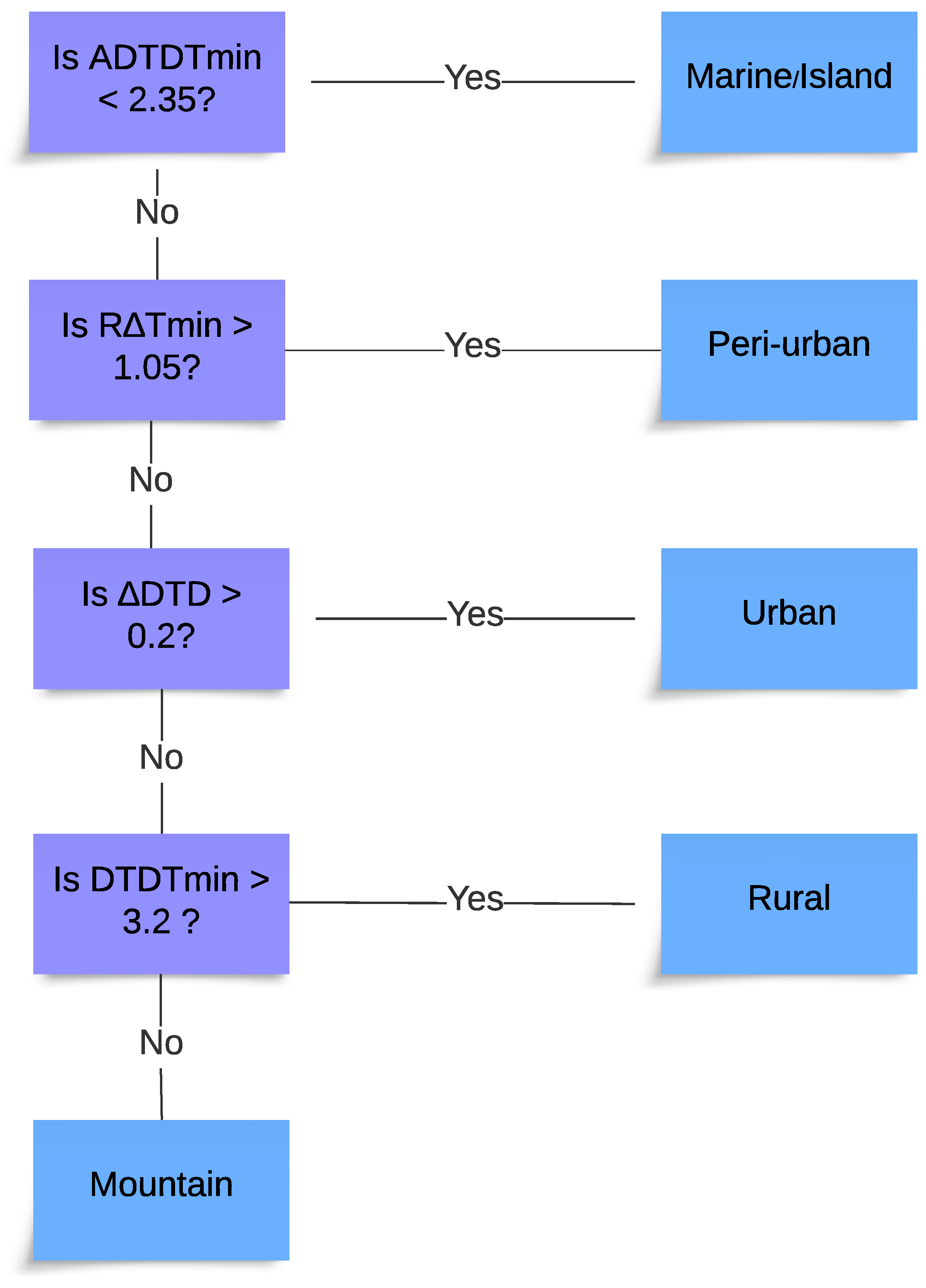

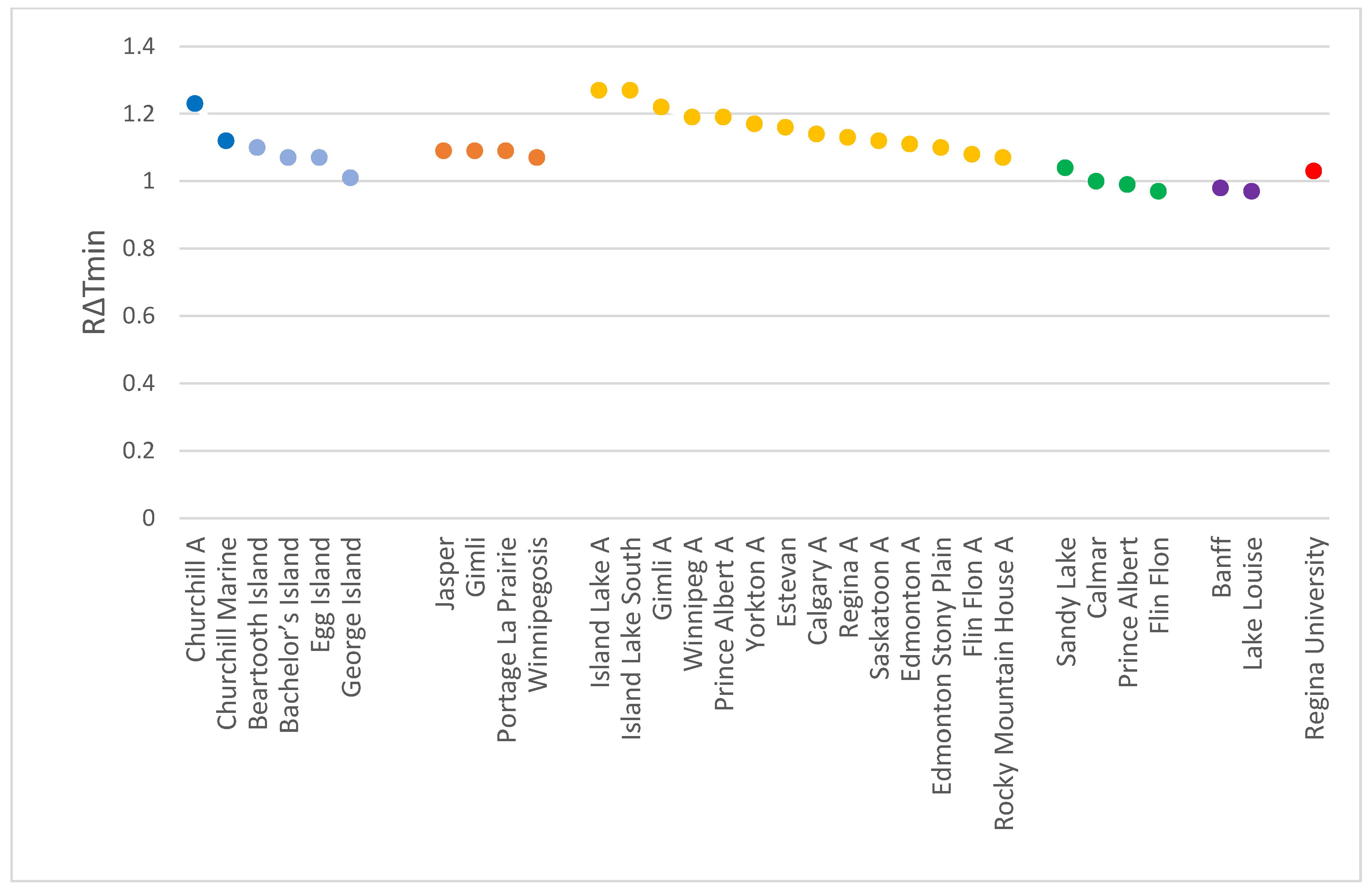

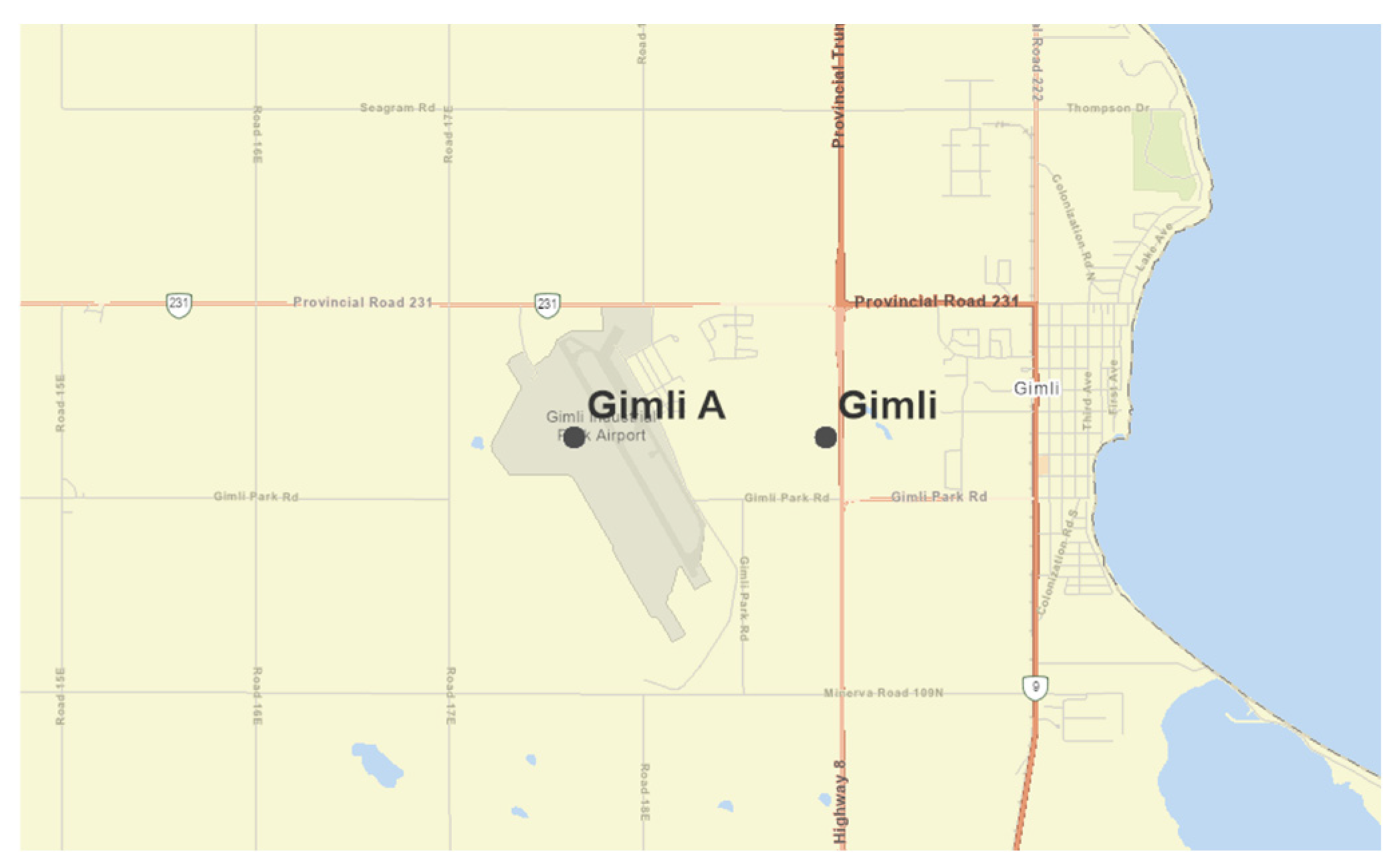
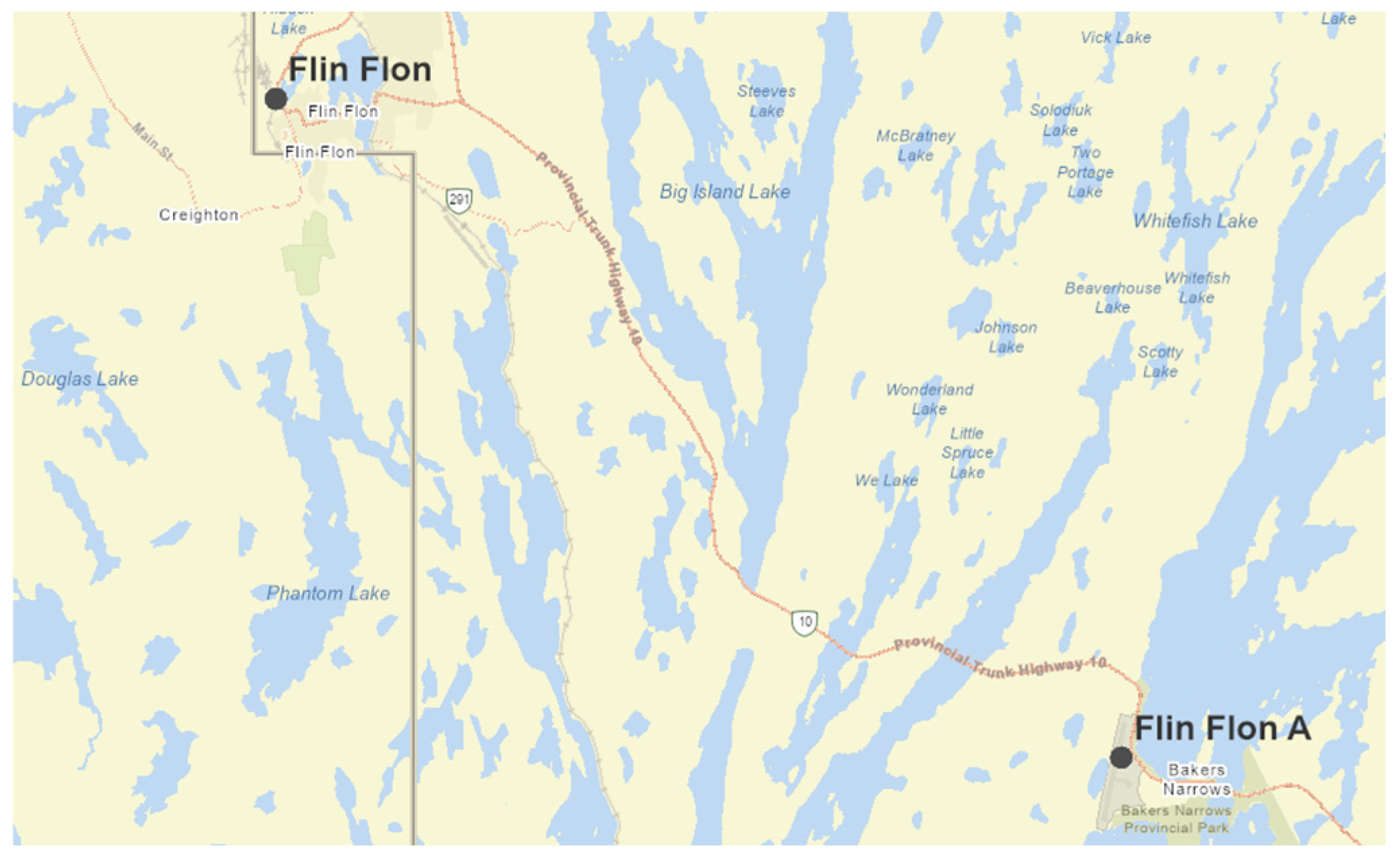


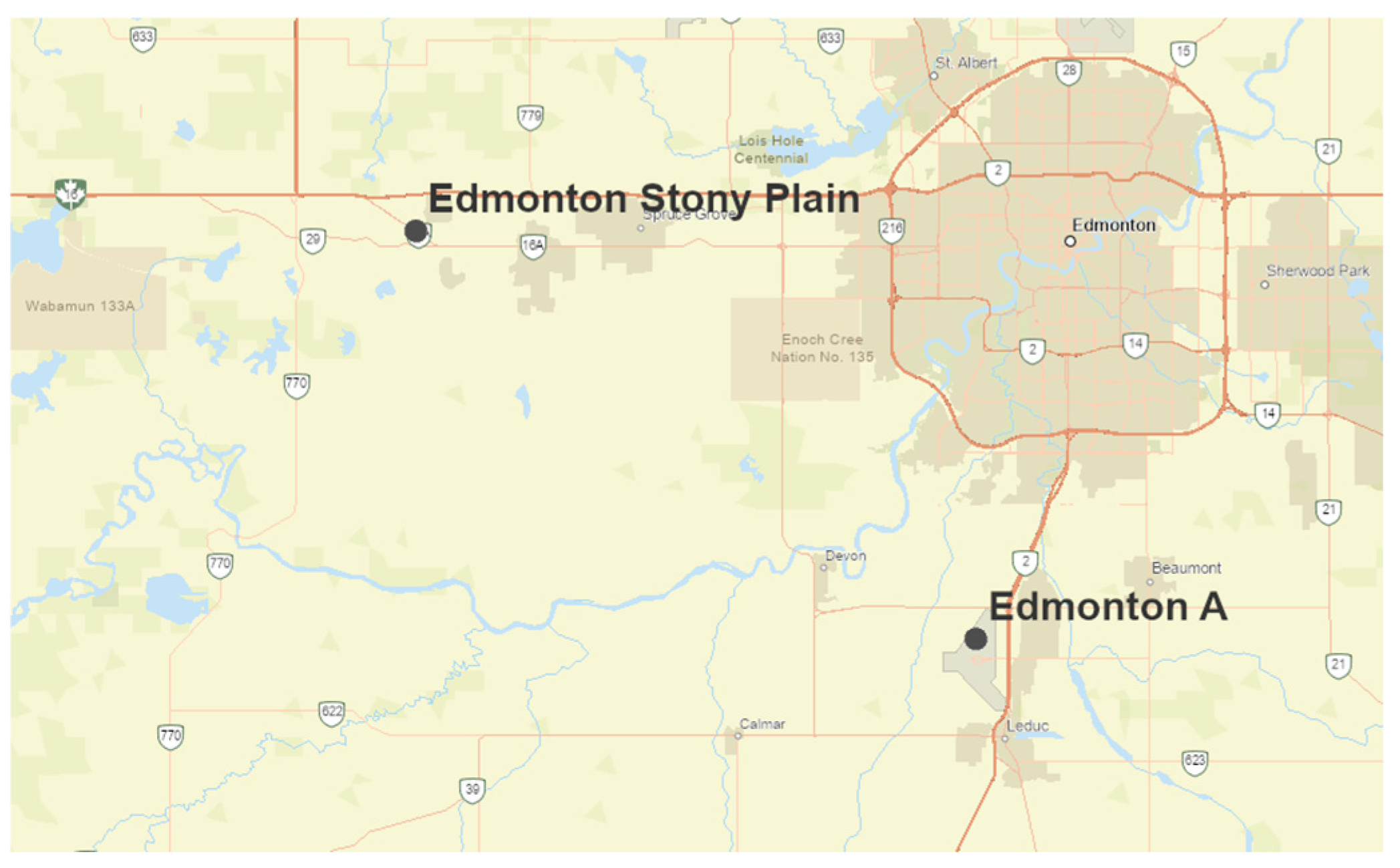
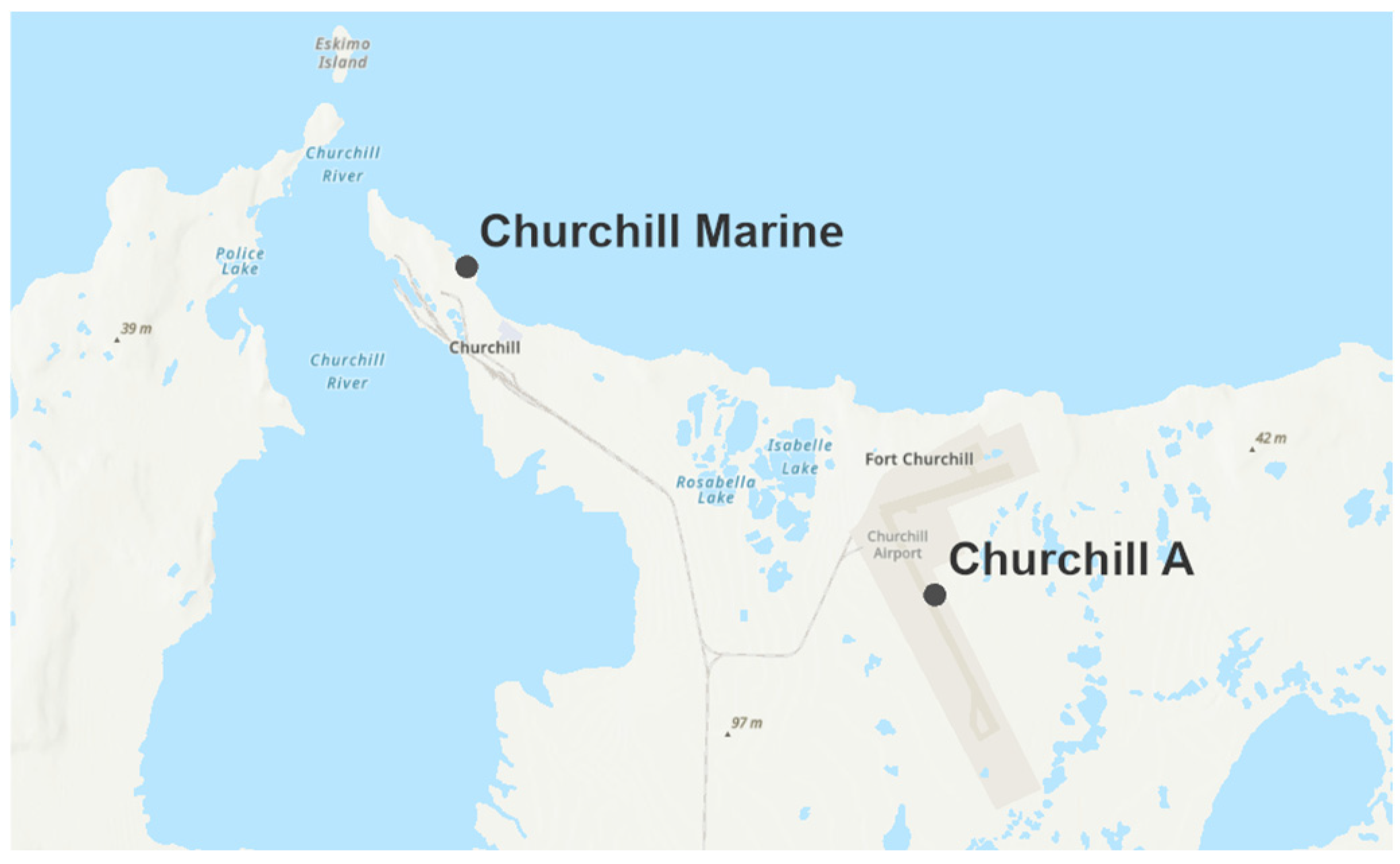
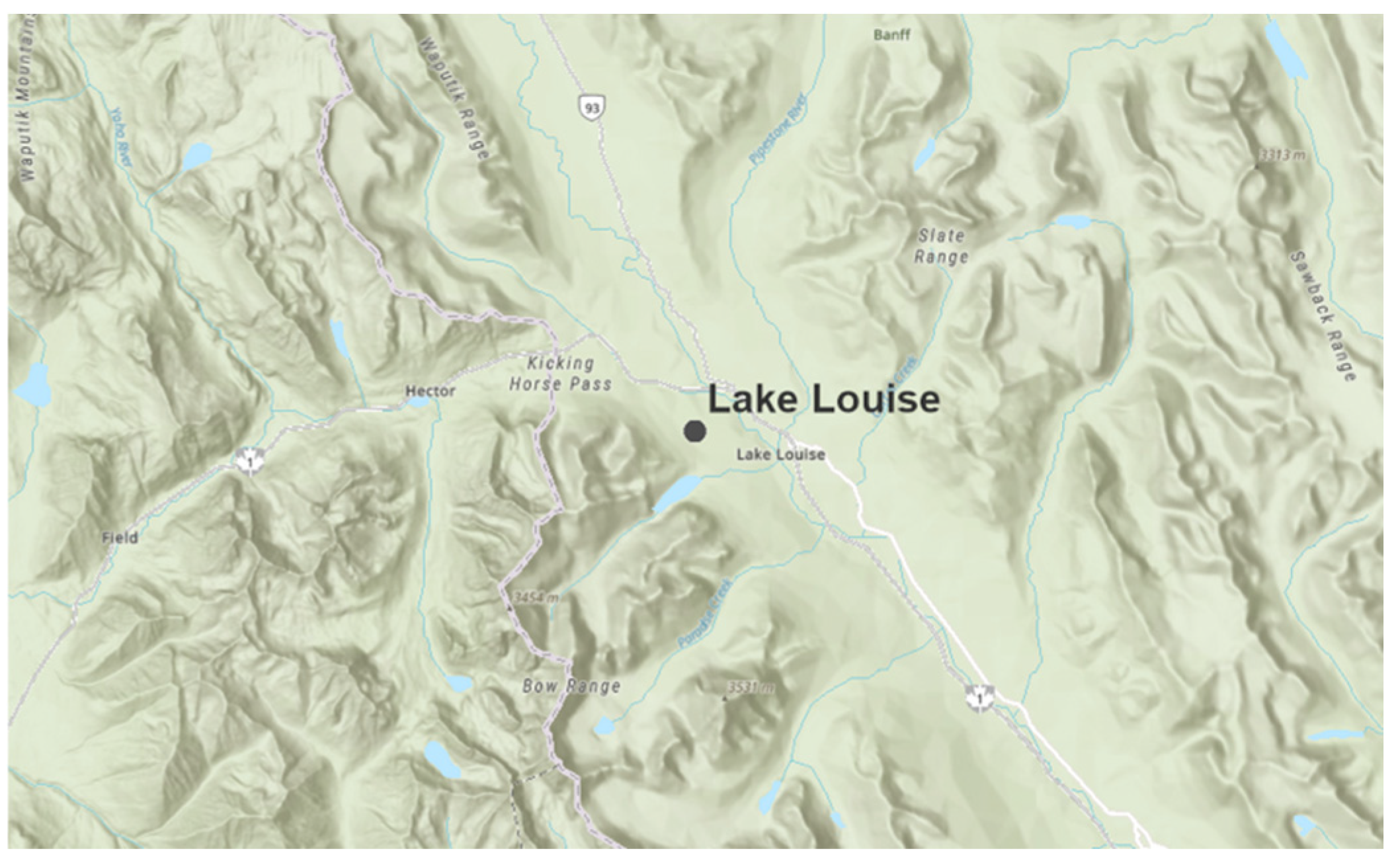
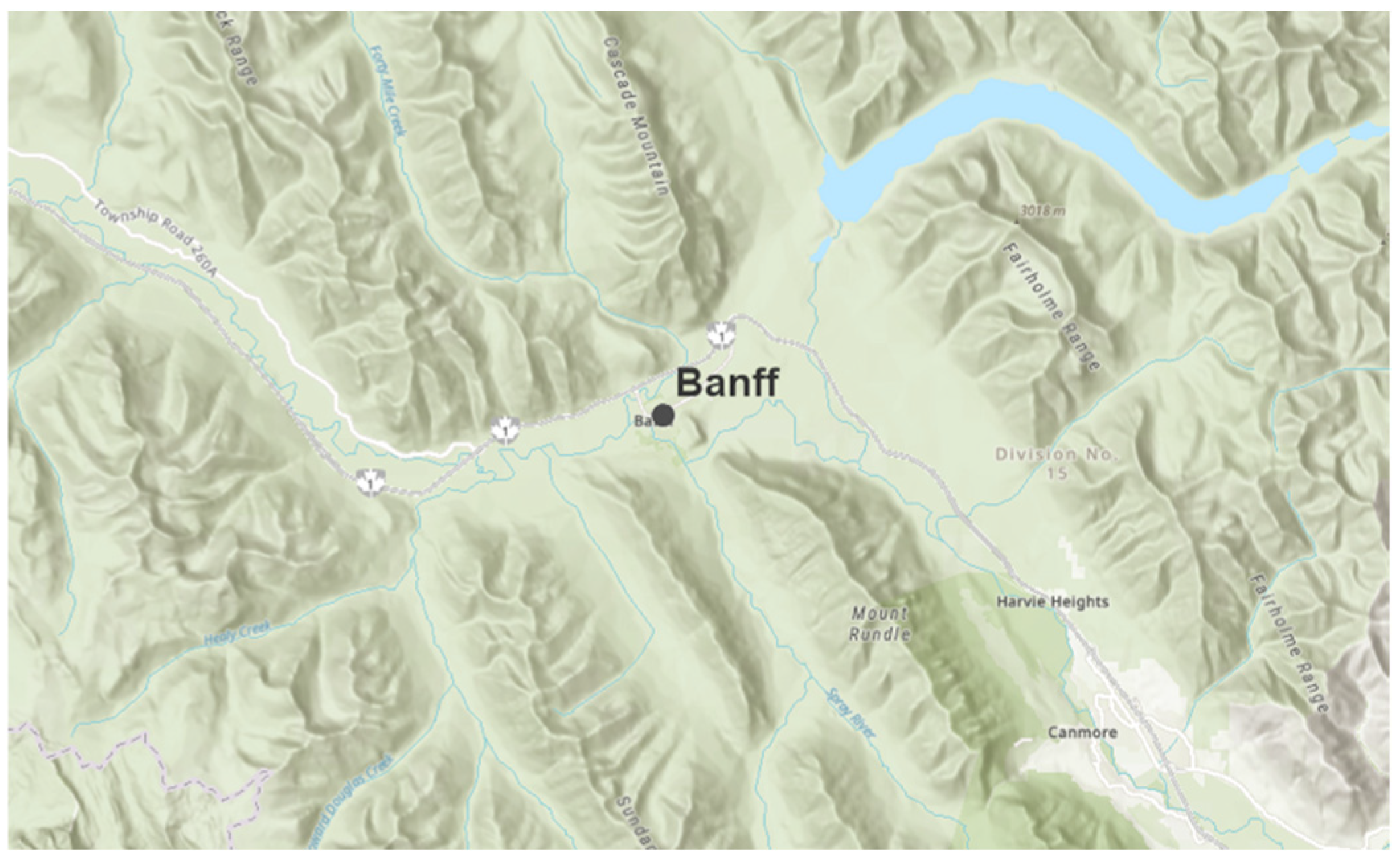
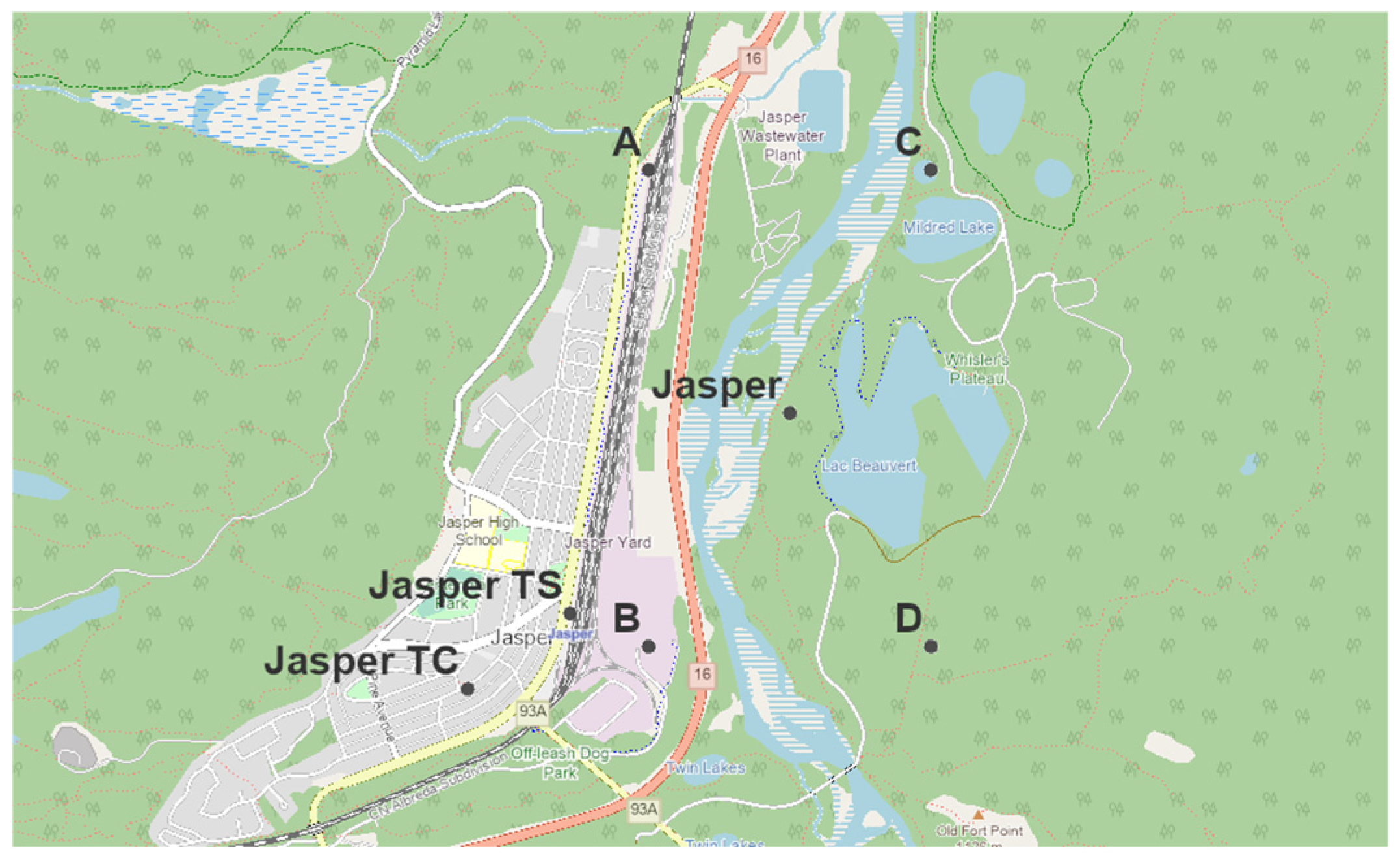

| Station | Province | Lat (N) | Long (W) | Elev | Years | Expected |
|---|---|---|---|---|---|---|
| Winnipeg A | Manitoba | 49.92 | 97.25 | 238.7 | 2001–2010 | Peri-urban |
| Winnipegosis | Manitoba | 51.65 | 99.93 | 257.6 | 1998–2003 | ? |
| Island Lake A | Manitoba | 53.83 | 94.65 | 235.3 | 1983–1992 | Peri-urban |
| Bachelor’s Island | Manitoba | 51.75 | 99.9 | 255.9 | 1997–2004 | Marine |
| George Island | Manitoba | 52.8 | 97.63 | 219.5 | 1971–1980 | Marine |
| Gimli | Manitoba | 50.63 | 97.02 | 222.8 | 1994–2003 | ? |
| Gimli A | Manitoba | 50.63 | 97.05 | 222.2 | 1961–1970 | Peri-urban |
| Churchill A | Manitoba | 58.74 | 94.07 | 29.3 | 2011–2020 | Peri-urban |
| Churchill Marine | Manitoba | 58.78 | 94.18 | 13.4 | 1938–1947 | Marine |
| Portage La Prairie | Manitoba | 49.98 | 98.32 | 261.2 | 1981–1990 | ? |
| Flin Flon | Manitoba | 54.77 | 101.88 | 320.0 | 2011–2020 | Rural |
| Flin Flon A | Manitoba | 54.68 | 101.68 | 304.2 | 2001–2009 | Peri-urban |
| Sandy Lake | Manitoba | 50.5 | 100.1 | 624.8 | 1991–2000 | Rural |
| Regina A | Saskatchewan | 50.43 | 104.67 | 577.6 | 1981–1990 | Peri-urban |
| Regina University | Saskatchewan | 50.42 | 104.58 | 573.0 | 1981–1990 | Urban |
| Yorkton A | Saskatchewan | 51.27 | 102.47 | 498.3 | 1991–2000 | Peri-urban |
| Beartooth Island | Saskatchewan | 59.22 | 109.7 | 238.0 | 1995–2000 | Marine |
| Estevan | Saskatchewan | 49.22 | 102.97 | 580.6 | 2012–2021 | Peri-urban |
| Prince Albert | Saskatchewan | 53.17 | 105.75 | 436.50 | 1931–1940 | ? |
| Prince Albert A | Saskatchewan | 53.22 | 105.67 | 428.20 | 2001–2010 | Peri-urban |
| Saskatoon A | Saskatchewan | 52.17 | 106.72 | 504.1 | 1991–2000 | Peri-urban |
| Calgary A | Alberta | 51.11 | 114.02 | 1099.1 | 1991–2000 | Peri-urban |
| Island Lake South | Alberta | 54.82 | 113.54 | 618.7 | 2016–2023 | Peri-urban |
| Egg Island | Alberta | 59.98 | 110.44 | 214.9 | 2013–2018 | Marine |
| Banff | Alberta | 51.18 | 115.57 | 1383.7 | 1981–1990 | Mountain |
| Jasper | Alberta | 52.88 | 118.07 | 1062.2 | 1981–1990 | Mountain |
| Rocky Mountain House A | Alberta | 52.43 | 114.92 | 988.2 | 1981–1990 | Peri-urban |
| Calmar | Alberta | 53.29 | 113.86 | 720.0 | 1991–2000 | Rural |
| Edmonton A | Alberta | 53.32 | 113.58 | 723.3 | 1994–2003 | Peri-urban |
| Edmonton Stony Plain CS | Alberta | 53.55 | 114.11 | 766.3 | 2011–2020 | Urban |
| Lake Louise | Alberta | 51.43 | 116.22 | 1524.0 | 1991–2000 | Mountain |
| Location | ADTDTmin | RΔTmin | ΔDTD | DTDTmin | Classification | Predictive Success? |
|---|---|---|---|---|---|---|
| Winnipeg A | 3.3 | 1.19 | −0.11 | 3.63 | Peri (airport) | Yes |
| Winnipegosis | 3.06 | 1.07 | 0.12 | 3.39 | Peri | |
| Island Lake A | 3.07 | 1.27 | 0.47 | 3.53 | Peri (airport) | Yes |
| Bachelor’s Island | 1.97 | 1.07 | 0.35 | 2.37 | Marine (Island) | Yes |
| George Island | 1.98 | 1.01 | 0.81 | 1.98 | Marine (Island) | Yes |
| Gimli | 3.64 | 1.09 | −0.6 | 4.06 | Peri | |
| Gimli A | 3.12 | 1.22 | 0.34 | 3.55 | Peri (airport) | Yes |
| Churchill A | 1.91 | 1.23 | 1.43 | 2.69 | Marine | No |
| Churchill Marine | 2.3 | 1.12 | 0.99 | 3.18 | Marine | Yes |
| Portage La Prairie | 2.61 | 1.09 | 1.14 | 2.96 | Peri | |
| Flin Flon | 3.0 | 0.97 | 0.15 | 3.44 | Rural | Yes |
| Flin Flon A | 3.28 | 1.08 | −0.33 | 3.73 | Peri (airport) | Yes |
| Sandy Lake | 3.50 | 1.04 | −0.39 | 3.97 | Rural | Yes |
| Regina A | 2.94 | 1.13 | 0.79 | 3.33 | Peri (airport) | Yes |
| Regina University | 3.3 | 1.03 | 0.29 | 3.83 | Urban | Yes |
| Yorkton A | 2.88 | 1.17 | 0.42 | 3.31 | Peri (airport) | Yes |
| Beartooth Island | 2.13 | 1.1 | 0.6 | 2.47 | Marine (Island) | Yes |
| Estevan | 2.89 | 1.16 | 0.64 | 3.27 | Peri (airport) | Yes |
| Prince Albert | 3.49 | 0.99 | −0.19 | 3.99 | Rural | |
| Prince Albert A | 3.12 | 1.19 | −0.06 | 3.52 | Peri (airport) | Yes |
| Saskatoon A | 2.98 | 1.12 | 0.19 | 3.51 | Peri (airport) | Yes |
| Calgary A | 2.87 | 1.14 | 1 | 3.19 | Peri (airport) | Yes |
| Island Lake South | 3.07 | 1.27 | 0.47 | 3.53 | Peri (airport) | Yes |
| Egg Island | 2.28 | 1.07 | 0.28 | 2.78 | Marine (Island) | Yes |
| Banff | 2.84 | 0.98 | −0.19 | 3.23 | Mountain | Yes |
| Jasper | 2.78 | 1.09 | −0.08 | 3.14 | Peri | No |
| Rocky Mountain House A | 2.99 | 1.07 | 0.52 | 3.42 | Peri | Yes |
| Calmar | 3.05 | 1 | −0.4 | 3.46 | Rural | Yes |
| Edmonton A | 2.98 | 1.11 | 0.17 | 3.27 | Peri (airport) | Yes |
| Edmonton Stony Plain | 2.45 | 1.08 | 0.75 | 2.85 | Peri | No |
| Lake Louise | 2.83 | 0.97 | −0.42 | 3.19 | Mountain | Yes |
| ADTDTmin | RΔTmin | ΔDTD | DTDTmin | |
|---|---|---|---|---|
| Airport | 3.09 | 1.15 | 0.18 | 3.48 |
| Non-airport | 3.10 | 1.04 | 0.08 | 3.62 |
| t-test p-value | 0.97 | 0.02 | 0.75 | 0.57 |
Disclaimer/Publisher’s Note: The statements, opinions and data contained in all publications are solely those of the individual author(s) and contributor(s) and not of MDPI and/or the editor(s). MDPI and/or the editor(s) disclaim responsibility for any injury to people or property resulting from any ideas, methods, instructions or products referred to in the content. |
© 2024 by the authors. Licensee MDPI, Basel, Switzerland. This article is an open access article distributed under the terms and conditions of the Creative Commons Attribution (CC BY) license (https://creativecommons.org/licenses/by/4.0/).
Share and Cite
Gough, W.A.; Li, Z. Climate Classification in the Canadian Prairie Provinces Using Day-to-Day Thermal Variability Metrics. Atmosphere 2024, 15, 1111. https://doi.org/10.3390/atmos15091111
Gough WA, Li Z. Climate Classification in the Canadian Prairie Provinces Using Day-to-Day Thermal Variability Metrics. Atmosphere. 2024; 15(9):1111. https://doi.org/10.3390/atmos15091111
Chicago/Turabian StyleGough, William A., and Zhihui Li. 2024. "Climate Classification in the Canadian Prairie Provinces Using Day-to-Day Thermal Variability Metrics" Atmosphere 15, no. 9: 1111. https://doi.org/10.3390/atmos15091111
APA StyleGough, W. A., & Li, Z. (2024). Climate Classification in the Canadian Prairie Provinces Using Day-to-Day Thermal Variability Metrics. Atmosphere, 15(9), 1111. https://doi.org/10.3390/atmos15091111






